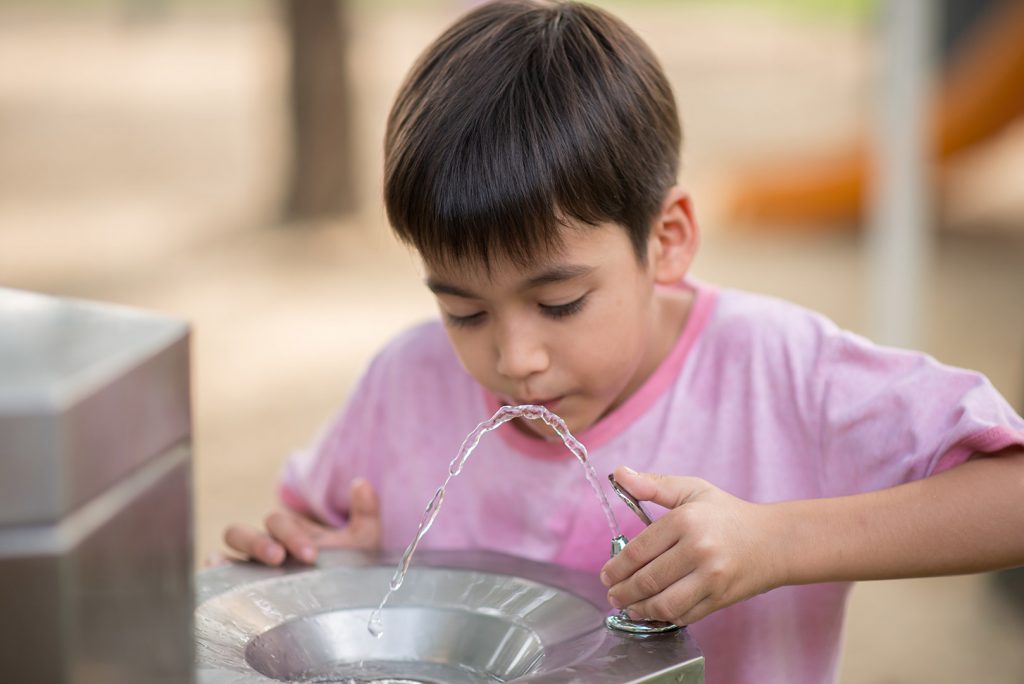
Lead in school drinking water has been a problem for decades, but still, to this day, federal regulations don’t require schools to test their drinking water, and there’s no one health standard for school drinking water that’s consistent across the entire country. Because of this, millions of American children are drinking water at school that has too much lead in it, and our children are suffering from a whole host of medical problems related to lead poisoning.
Post-Flint, We Still Don’t Have Safe Water
You may remember what’s been called the “Flint Water Crisis” in 2015 when several personal injury lawsuits and class-action suits were filed against Michigan, the city of Flint, and state and city officials and employees involved in the decision to change the city’s drinking water source from Lake Huron and the Detroit River to the Flint River for economic reasons. In 2011, the State of Michigan had to take over Flint’s finances after an audit showed a $25 million deficit, and the “solution” was to change the city’s drinking water source to the Flint River to save money.
The switch caused distribution pipes to corrode and leach lead and other contaminants into the city’s municipal drinking water. Soon after the switch, residents noticed their water looked, smelled, and tasted funny. Tests done in 2015 by the Environmental Protection Agency showed dangerous levels of lead in the water residents’ homes. The dangerous levels of lead can lead to heart, kidney, and nerve problems, and lead exposure in children may result in impaired cognition, behavioral disorders, hearing problems, and delays in puberty.
Crisis of Epic Proportions
The Centers for Disease Control and Prevention (CDC) reports that approximately four million households in the United States have children who have been exposed to high levels of lead in their drinking water, and about a half million kids ages 1-5 have blood lead levels higher than 5 micrograms per deciliter (the level at which the CDC recommends public health actions be initiated). Another startling statistic is that an investigation in December 2016 revealed that in the United States there were about 3,000 areas in the United States with lead poisoning rates higher than those in the Flint, Michigan during the Flint Water Crisis.
At the current time, only 24 states and Washington, D.C. even require schools to test for lead or have programs in place to conduct lead testing. Only seven states and D.C. require water tests in schools; in the other 17 states with programs, participation is voluntary. In the states that do require lead testing, the testing standards are not uniform in what the acceptable threshold is for safe drinking water. In those locations where lead water testing do exist, 44% of schools reported lead levels higher than their state threshold for action. And about half of the country’s students are at public schools in states that don’t have programs or requirements to test drinking water in those schools.
No Set Standard for Safety
While scientists and the EPA agree that no level of lead in water is safe, different drinking water safety standards exist all over, even at the federal level. The FDA (Food and Drug Administration), for example, doesn’t allow bottled water to have more than 5 parts per billion (ppb) of lead, but the EPA only requires municipalities to alert their customers if samples exceed 15 ppb. In 2006, the EPA recommended a threshold of 20 ppb for those participating in a voluntary school water-testing program. There is clearly no consistency at all in what is deemed an “acceptable level” of lead in public drinking water.
Obviously, more research and work is needed to agree on a standard that all areas of the country must adhere to in order to keep our children’s drinking water free of lead.
Leave a Reply